By Alex Trukan
Many teams in modern football have adapted a reactive approach to attacking. That means they give initiative to the opposition, set up a deep defending block and try to win the ball in certain areas to then counter attack. The team that is attacking against such tactics has to carefully consider risks and opportunities involved in getting more players in the final third and less players behind the ball what can lead to dangerous counter attacks and being outnumbered upon losing possession. Therefore, the attack against the team that is defending deep will be usually based on having less players than the opposition on their half of the pitch. That in turn, forces the attacking team to be clever in using the spaces, make appropriate movements off the ball as well as find creative ways to combine and break through a block of defenders.
Usage of space
The team defending compact on the own half will try to condense space as much as possible and reduce spaces to play through. The attacking team, should try the opposite and by clever positioning of the players, make the space as big as possible. That will create room for both individuals and a team. They key players to provide width are full backs and wingers, whereas in order to create length, strikers should try to play as high as possible. Midfielders will aim to not be marked and play in different spaces than other teammates.
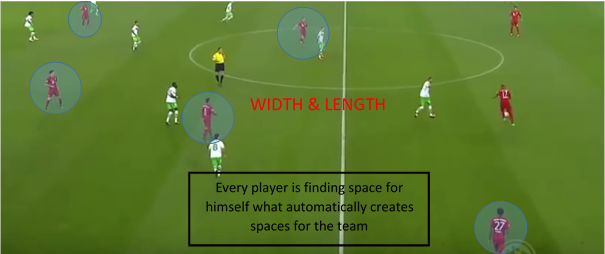
Movements to receive
Players around and away from the ball should show commitment to receive and get on the ball. The desire to have the ball and not hide is crucial. After that, the type and timing of the movements to create space and receive would be helpful. Players should not only try to lose the marker as an individual but also make movements in relation to other teammates and create space for others.
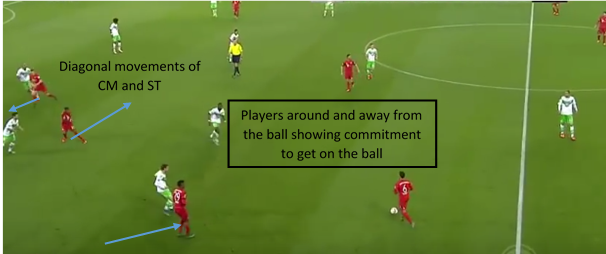
Support and playing between the lines
Apart from movements to receive, players around the ball should try to make themselves available as a passing option at all times. The more players are available, the easier it will be to move the ball and penetrate. To cause a problem for the opposition, it is useful to play in between the units and between the players of the opposition. That is especially effective when the opposition plays with a flat line. Body position to receive and play forwards, receiving on the back foot as well as communication are important technical details to consider.
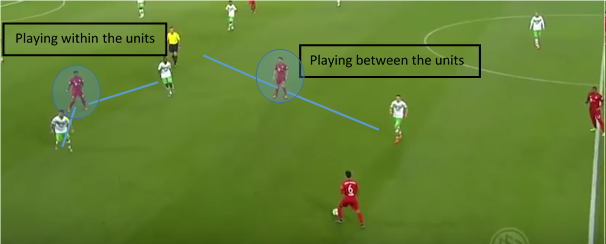
Switching play
When the opposition defends on the own half, it will usually try to be as compact and narrow as possible. That will usually create space on the wings and on the ‘weak side’. In order to exploit that, wingers or full backs have to play as wide as possible, in line with the opposition back unit (avoiding off side). In addition to that, when the ball is on one side of the pitch, central midfielders or centre backs should make themselves available to pass to and then hit diagonal ball to the opposite flank. The quicker the switch is, the more time and space the receiver will have on the ‘weak side’.
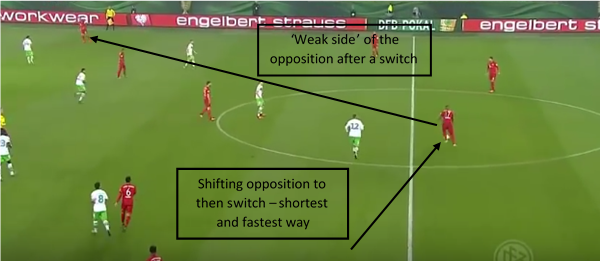
Unconventional movement
In order to disorganise the opponent, attacking players will have to make unconventional movements as some point. Not ‘typical’ movements make sure that opposition’s response will turn them into unbalanced state what will usually create new spaces to exploit. That might for example mean centre back driving forwards centrally, creating overload on the wing or full back underlapping the winger.
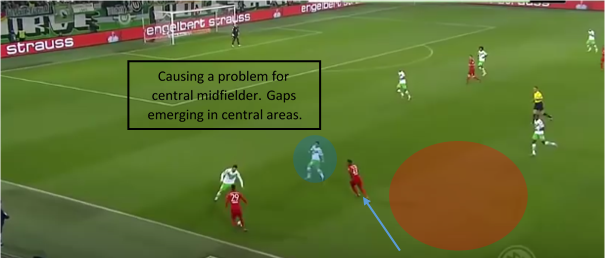
Combination play around the box
Once the ball is already around the box, the attacking players will usually find themselves heavily underloaded. In response to that, they will have to combine with each other in small groups in order to create a scoring chance. The crucial aspect is the desire to get on the ball which should be supported by movements off the ball as well as high technical capabilities of players. Combination play should be practiced both as uncontrolled movements emerging through creativity of the players as well as patterns of play and movement.
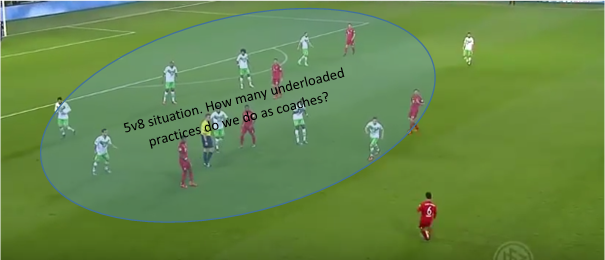
Hitting the target
Breaking the team defending deep doesn’t necessarily mean going through into the penalty box. The attacking team should aim at getting the ball into goal scoring positions as often as possible and hitting the target from there. As a reference point, zone 14 which is in front of the opposition penalty box might be a good platform to make assists from as well as shots on target.
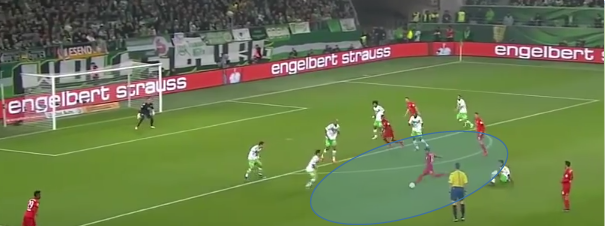
Attacking against the team defending on the own half requires both a lot of coaching as well as creating appropriate environment to experiment and letting the players to be creative on their own. It is a combination of great pieces of play produced by players without coach’s interference as well as patterns of play and movements repetitively drilled. From a coach’s point of view, it is important to find that balance between those two. That will depend on the current level of players as well as their experience in playing the game.
By Alex Trukan, Development Coach, Nottingham Forest
@AlexTrukan


